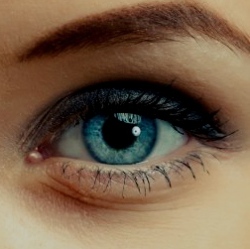
Human corneas have been 3D printed for the first time. The researchers mixed stem cells from a healthy donor cornea with alginate, a gel derived from seaweed, and collagen to create a “bio-ink” solution that can be printed. Using a 3D printer, this bio-ink was extruded into concentric circles to form an artificial cornea.
“What we have shows is that it is feasible to print corneas using co-ordinates taken from a patient’s eye,” said Che Connon, Professor of Tissue Engineering at Newcastle University, who led the work.
He added that the research could help with the worldwide shortage of corneas for transplant. The cornea, the outermost layer of the human eye, has an important role in focusing vision.
Currently around 10m people worldwide each year require surgery to prevent corneal blindness as a result of diseases such as trachoma. Around 5m people annually lose their sight in both eyes due to corneal dysfunction caused by disease or accident.
Professor Connon said many teams across the world have been chasing the ideal bio-ink to make the process feasible. Flat tissue has previously been created but, he said, this was the first time shaped corneas had been produced.
“Our unique bio-gel — a combination of alginate and collagen — keeps the stem cells alive while producing a material which is stiff enough to hold its shape but soft enough to be squeezed out the nozzle of a 3D printer,” he said.
The 3D printed corneas produced at the University’s Institute of Genetic Medicine will now have to undergo further testing but it is hoped the technique could be in regular use within five years.
The shortfall in corneas available from organ donors has been compounded by the popularity of laser eye surgery, since corneas cannot be donated following this procedure.
